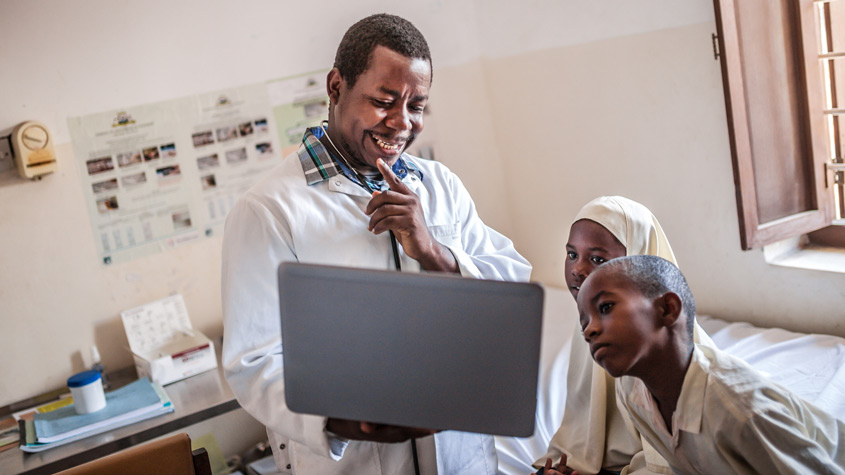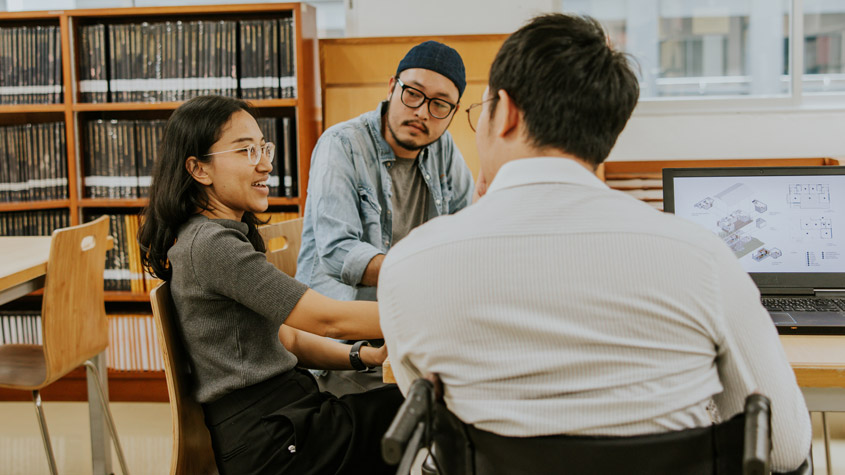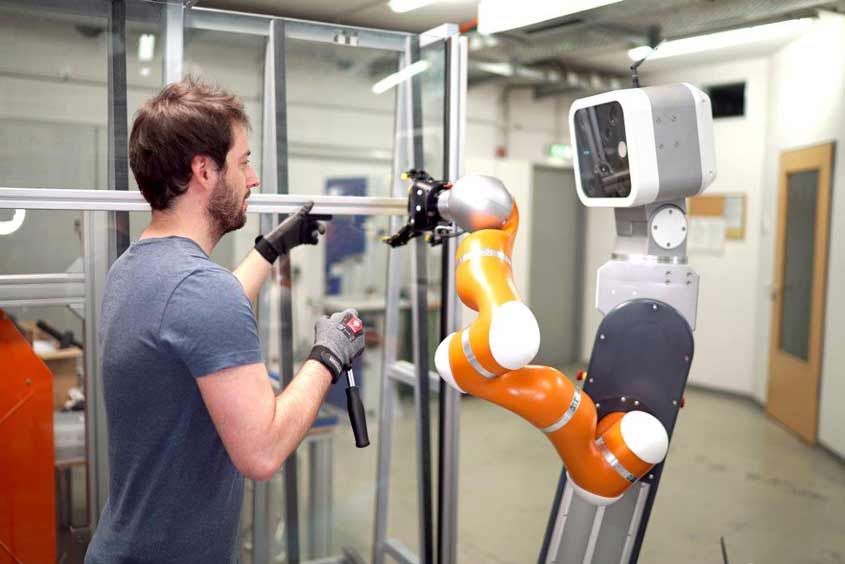By Alexander Cuntz, Head of Creative Economy Sector, WIPO, and Alessio Muscarnera, Research Fellow, Department for Economics and Data Analytics, WIPO
So far, the public debate on access to medicine, neglected diseases, and patent-protected technology has underplayed the potential of access to information for economic development. Similarly, earlier research has revealed a startling gap between lower- and higher-income countries in terms of access to knowledge, with over half of medical institutions having had no subscriptions to academic literature in lower-income countries.

Several UN agencies and major academic publishers launched the Research4Life (R4L) initiative to fill this gap. The World Health Organization (WHO) runs Hinari (Research for Health), one of five programs under the R4L umbrella. It provides free or low-cost access to academic literature to at least 270,000 researchers in over 100 developing economies. This is for this WHO-led program alone. The entire initiative includes more than 21,000 peer-reviewed journals, 69,000 e-books and 115 data and other sources.
Focusing on Hinari, a new WIPO research paper carried out empirical analysis of millions of data points to understand the strengths and weaknesses of the program. It is the first study to link access to scientific publications in developing countries to welfare along the science-to- innovation pipeline.
Institutions in specific regions and those already having a high research performance made the most out of the Hinari program. This also means that it is harder for others to catch up.
The report shows a local increase in health science publications of up to 75% after joining Hinari. Likewise, involvement in international clinical trials grew by over 20%, suggesting that research and innovation in local institutions improved. Screening over 36 million scientific papers in PubMed, a repository of health science, the study found more than 167,000 papers co- authored by local researchers in developing economies, which cited clinical trials conducted worldwide over 30 years.
An uptick in research and clinical trials only sometimes leads to global patents.
However, this uptick in science publishing and clinical trials only partially translated into global patents and inventions. The study attributes this to developing countries often lacking infrastructure and funding to transfer new findings into patented technologies. This gap reveals the remaining challenges in developing innovation and IP systems.
Moreover, the study also finds that local context matters. Institutions in specific regions and those that already had a high research performance benefited most from the Hinari program. This also means that it is harder for others to catch up, despite better access to information.
Access to global knowledge counts on the ground
Empowering local researchers by providing access to information is essential to their work. Researchers tend to target diseases that affect the local population and may be overlooked by researchers abroad. Enabling such access may help innovation in neglected diseases, mainly by connecting local teams to the global knowledge base.

Aside from increased scientific activity, R4L also reports direct effects from Hinari regarding medical practice and patient care. The initiative quotes Dr. Nguyen Duc Chinh from Viet Duc Hospital, Hanoi, Viet Nam: “Good research, in short, leads to better patient care.” The doctor relied heavily on Hinari for his PhD on intestinal TB and surgical treatment. TB is prevalent in Viet Nam, but there is a relative lack of information on intestinal TB. “With the information and knowledge we obtain,” he says, “we feel more confident in practicing and implementing respected medical expertise from around the world.”
Empowering local researchers by providing access to information is essential to their work.
Dr. Sami Hyacinthe Kambire at Kamboinsé Research Station, Ouagadougou, Burkina Faso, also found his research progressing faster and wrote grant- winning funding proposals thanks to Hinari. Before his institution adopted R4L, Dr. Kambire often devoted considerable time to research already performed elsewhere. The initiative helped reduce these duplicative research efforts in global health sciences and increase the quality of local teaching and education.
Access to information affects institutions differently
Despite the impacts, the study also found that the program effects differed for different parts of the world. Research institutions in the Carribean, Central Asia, Europe and Latin America benefited the most in generating new scientific knowledge. On average, their academic paper output increased by 80–100%.
Regarding clinical trials, program participation is most impactful for East Asia, the Pacific, the Middle East and North Africa. Trial activity rose by up to 35% at institutions in these regions. That does not mean other regions did not gain from the program, but the impact has been less pronounced.
Hinari preserves the gap between the most and least productive institutions for scientific publications and clinical trials.
However, there are also institutional differences. Notably, the study authors wanted to avoid comparing apples to oranges, because high- and low-performing research institutions differ. The high performers might be more likely to adopt the Hinari program in the first place. Seeing more publications might also be an outcome of the institutionsʼ selection into the program rather than an outcome of the program and better access to knowledge on the ground. To reveal the causal effects rather than mere correlations, the study compares different fields. This means health sciences supported by the program are matched against other research fields not supported by Hinari but conducted at the same institution.

How to make the most of access to information
Having ruled out the factors described above, the report suggests that program management could improve in two ways. First, it shows that already productive institutions benefit more from Hinari. For example, research institutions that have previously published academic papers see an average 60–70% increase in their publications after joining. This increase is only around 40% for institutions that rarely published scientific works previously. This suggests that Hinari preserves the gap between the most and least productive institutions for scientific publications and clinical trials. Under these conditions, the least productive institutions are, all else being equal, less likely to catch up.
Still, the study ultimately supports the view that the Hinari program and the R4L initiative contribute to achieving the SDGs. They help boost research and innovation capacity in developing economies and improve health services (SDG 3) and education quality (SDG 4) at local institutions. They also aim to build industry, innovation and infrastructure, thus encouraging decent economic growth (SDGs 8 and 9).
The Hinari program and the R4L initiative contribute to the SDGs.
The R4L initiative is also an excellent example of how private–public initiatives can make a difference. It joins private sector stakeholders from the global publishing industry and research institutions in the UN member states in a win–win situation. For research institutions, the initiative provides a practical solution. Their libraries and labs often need to be better resourced, and R4L improves access to information for students and researchers. It is also a smart way for industry stakeholders to show their corporate social responsibility and enhance their social impact in developing economies. It could also help grow local demand and the customer base in the long term.
Moreover, easing access to published research through initiatives like Hinari and WIPO’s Access to Research for Development and Innovation (ARDI) program can significantly affect research output and contribute to desired social and economic outcomes laid out in the SDGs. UN agencies like the WHO and WIPO have been vital matchmakers. However, addressing existing gaps, schemes such as WIPO’s Technology and Innovation Support Centers (TISC) may help build local infrastructure and contribute to a vibrant intellectual property and innovation system. In conclusion, the report's findings on success and remaining challenges may inform stakeholders' decisions to renew or change their commitment to R4L beyond 2025.
The study was authored by Alexander Cuntz (Head of Section, Creative Economy Section, Department for Economics and Data Analytics), Frank Müller-Langer (Professorship of Digital Transformation, University of the Bundeswehr Munich; Max Planck Institute for Innovation and Competition Fellow), Alessio Muscarnera (Research Fellow, Creative Economy Section, Department for Economics and Data Analytics), Prince Oguguo (Young Expert, Creative Economy Section, Department for Economics and Data Analytics), Marc Scheufen (Senior Economist, German Economic Institute (IW) Cologne).



